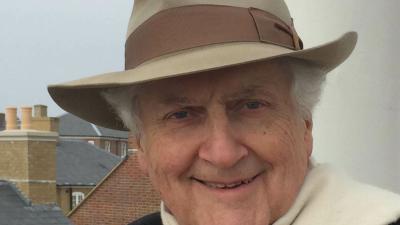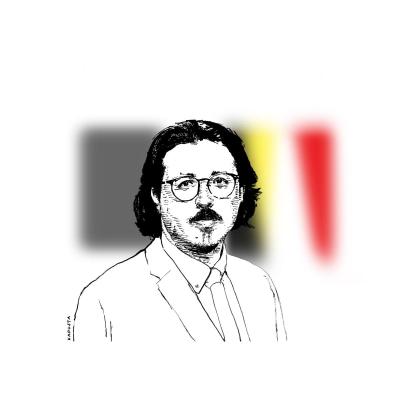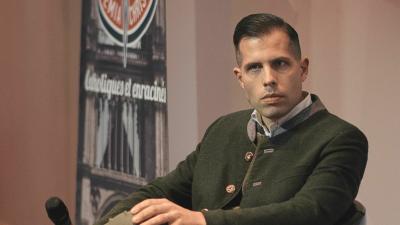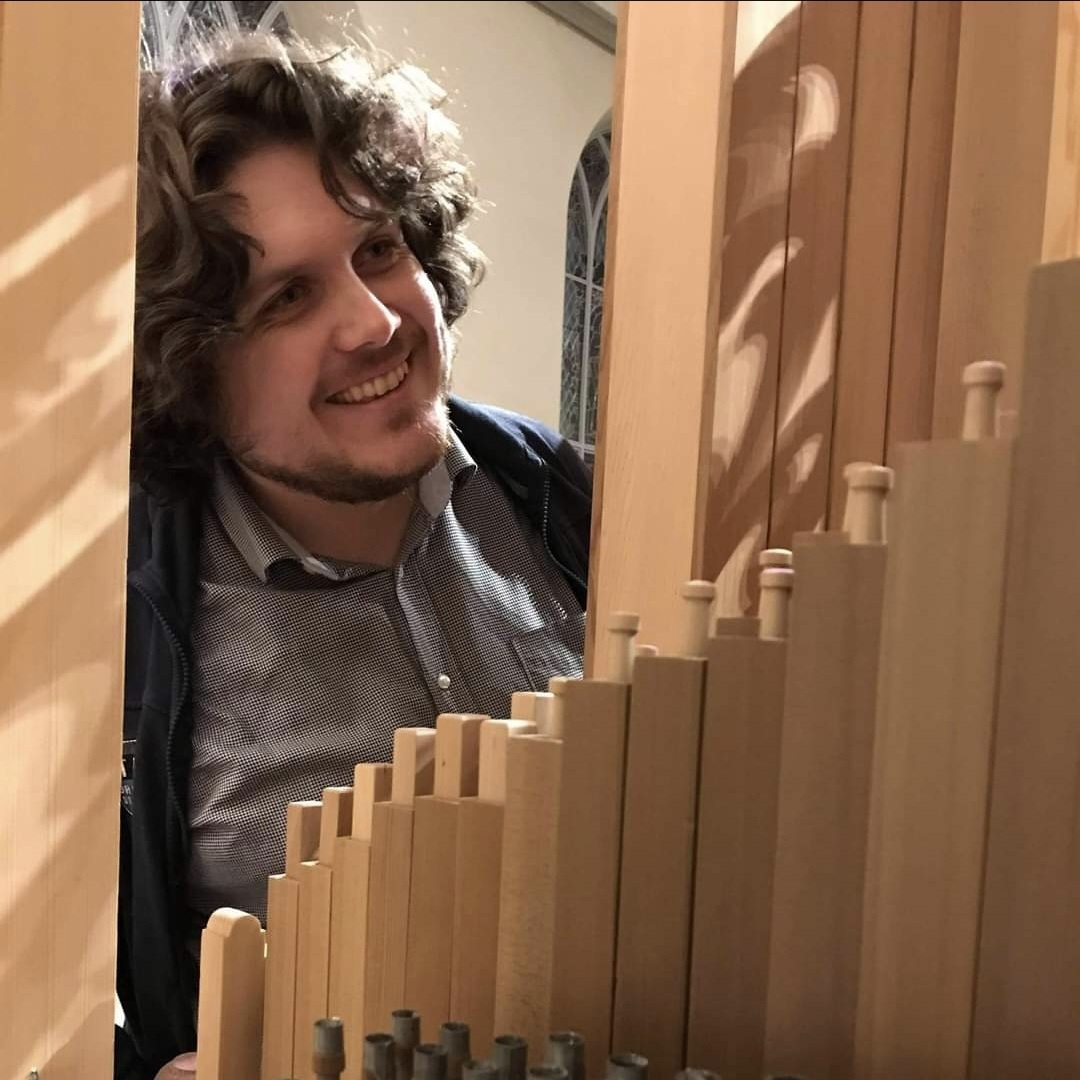"Don't just criticise, create! Interview with Léon Krier, leader of the neo-traditionalist architecture
This is the fifth episode of our new interview series entitled "Don't just criticise, create!" David Engels talks to European artists, philosophers, priests, intellectuals, activists and craftsmen who have decided not only to lament the "decline of the West", but also to try to help reverse it. They did so by creating something new - and perhaps also something beautiful, true and good.
David Engels: Dear Léon, you are one of the best known and most prolific traditionalist architects of our time, and many consider you to be the current leader in the rejection of post-modern aesthetics and a return to individual building and urban planning that takes the proportions and needs of the human, not just the machine, as its priority. Could you tell us in a few words the basis of your architectural philosophy?
Léon Krier: In the sixties and seventies, I was part of the first generation of architects who took a position not only of criticism but of counter-project to modernist theories and practices. Witnessing the massive demolitions in our cities and the scandalous banalities that followed them without exception, we began to re-evaluate the traditional architecture and cities of Europe, which were more threatened by modernist utopias than by wartime bombings. With Maurice Culot or Pierluigi Cervelatti, it was understood that it was necessary to reconstruct not only the literal European city, but also its discourse and the meaning of key terms kidnapped by modernism. "Tradition" and "Modernity" are obviously not contradictory notions. The so-called "Modern Movement" indicates the only "modernist movement", while twentieth-century modernity, in architecture, urbanism and art, includes important traditional practices and ideas. We do not see ourselves as traditionalists, but as modern traditionalists. The construction and success of Port Grimaud by François Spoerry, the preservation and restoration of the Historic Centre of Bologna by Pier Luigi Cervelatti and the universally acclaimed Reconstruction of Warsaw's Stare Miasto by Jan Zachwatowicz were for us proof that not only were traditional practices possible in our lives, but that their product was of a higher quality and order than those delivered by various modernisms. Modernity, we keep repeating, is not a matter of style, but a fact of the age from which no one can escape. In terms of architecture and urban planning, the modern traditional is first and foremost a choice of technology and life. In the production line of the traditional city, which engages individuals from the conception to the final use, via the manufacturing, all those concerned, whether the architect, the craftsman, the promoter, the inhabitant, the owner, the tenant or the visitor, find their daily pleasure independent of their age, sex, class, religion, race or ideology; on the other hand, in the production and use chain of a modernist environment, only the demolisher briefly finds his or her own satisfaction.
A question that lies at the centre of this debate is undoubtedly that of aesthetics: is it purely relative or rather absolute; i.e. is there a meaning to it? Is there an innate sense of beauty that (although declined according to civilisational particularities) would favour certain measures, proportions and aesthetic laws over others across time and space?
Geography, languages, races, classes, customs, religions and ideologies have always represented, expressed and maintained divisions between societies and individuals. On the other hand, the beauty of nature and of man's products unifies humanity. The Christian admires the beauty of mosques, and the Muslim that of churches, the prince admires the beauty of the stable, the peasant that of the castle, the libertarian that of the Kremlin, the child that of the aeroplane. Beauty imposes itself on the senses with immediacy. We are defenceless against the arrows of love that strike the heart without explanation or examination. Love for beauty commands and does not command itself. Ugliness, on the other hand, poisons the heart and breeds resentment.
Our world today has become, let's face it, very ugly, and modern architecture is a big part of that. What is the impact of this toxic environment on the individual?
The individual who is regularly beaten and humiliated becomes accustomed to the beatings, develops a tough skin and insensitivity. We also know that the beaten child will one day seek pleasure in beating and humiliating. Vulgarity, brutality, ugliness are a toxic and jealous culture. Unable to awaken love, it seeks to possess through rape and degradation. The blind belief in infinite progress comes at a terrible price, degrading and destroying in a few generations the values and know-how that, accumulated over the centuries, have succeeded in building houses and cities that embellish nature and the life of everyone. Imagine the consequences for the beauty of the world if everything built before 1950 disappeared, or if everything built after 1950 disappeared...
You are best known for designing the model town of 'Poundbury' in the UK. Initially you were criticised for what was perceived as its 'anachronism' and 'artificiality', ensuring that the project was unworkable and impractical, at best a fantasy for a few nostalgic rich people. Today, on the contrary, we see a city in full expansion and loved by its inhabitants from the most diverse social strata. Can you tell us the story of this success - and the reasons for it?
Yes, the reception of the Poundbury project by the mainstream media 'experts' was misleading for the first ten years. They thundered that it was a fantasy of the Prince, unachievable in 20th century England for philosophical, technical, political, social, financial, ethical and other reasons. The architectural critics of the major newspapers turned out, with some exceptions, to be modernist missionaries. They could not applaud a traditional project for reasons of principle, whatever its qualities or success. Their propaganda has been repeating for a century that there is no alternative to modernism, i.e. that there is no freedom of choice or democracy in the matter.
We know that you worked intensively with Prince Charles, the patron of Poundbury, for many years. How do you see the possibilities for the tradition under his new reign?
King Charles III remains the person I knew as Prince of Wales. I saw him recently at Windsor Castle for Tea and Scones, and he seems to be more comfortable in his own skin than ever. As his projects are hugely successful in the market, the formula is spreading. We are regularly visited by ministers, senior civil servants and powerful people from the UK, the Commonwealth and beyond. What worries me is that the idea of the polycentric city made up of "independent 10-minute neighbourhoods", which I have championed for the past 45 years, is being reprogrammed by the WEF, UN and WHO clan into a "15-minute city", which, with the help of digital control and CBDC, will be transformed into a gulag archipelago to stifle any dissent to the narratives of the moment, (One Health, Climate Change, Domestic Terrorism...) Time will tell...
What do you see as the future of traditionalist architecture - will it always remain on the fringes of the overwhelming majority of the built environment, or is there a real chance of it returning to the forefront?
Traditional architecture and urban planning are the product of a technology that uses local natural building materials to build cities and villages sized according to the capacities of horizontal or vertical muscular locomotion. The monstrous sprawl of urban areas, the explosion in the number of floors, the formal and structural acrobatics, the loss of human scale and beauty of machine-made architecture are only possible thanks to synthetic building materials and industrial cloning, products of fossil and nuclear energy. Those countries that succeed in securing these resources through armed actions of conquest and domination will be able to continue the modernist project until it is finally exhausted. The rest of the world will inevitably return to traditional building practices.
I thought for a very long time that once our general theory for modern traditional architecture and urbanism was formulated and published, there would be a quick general rallying of support driven by democratic initiatives. Now I know that this change will not be by choice, but by fate.
Often it seems that traditionalist architecture remains a privilege of a few wealthy patrons - how do you see the chances of its return in the realm of more humble real estate, available to all?
Maybe from the perspective of sustainability, there is a chance. Modernist architecture was imposed by the violence of its promises. Today, their falsity is proven, revealing a titanic struggle between large-scale corporations and financial institutions, in collusion with state technocracies, and what remains of enlightenment, individual enterprise and independent thought. We are heading for an apocalyptic outcome that, for the moment, seems inevitable. Human intelligence will not be able to control the self-destructive effects of its inventions and projects. That said, neo-traditional urbanism and architecture based on an artisanal economy, supported by thousands of years of experience, are the only coherent theory and practice of environmental action to date. They are the only serious counter-model to suburbia and motopia. They are an essential part of a project to rebuild a democracy, an economy and a built environment on a human scale. The many architects and craftsmen who practice them around the world, despite their modernist training, against overwhelming peer pressure, against bureaucratic and academic sabotage, are buoyed by broad public support and market demand. Architects and planners face an existential choice: either to serve a totalitarian dystopia or to plan and build the common good.
This series of interviews is under the motto: "Don't just criticise, create! Can you describe the projects you are currently working on?
The construction of the fourth and final neighbourhood in Poundbury is well underway. Cayala in Guatemala is initiating its second neighbourhood. The bridge, modelled on the Hundred Steps of Versailles, linking the Paseo de Cayala with Nogales de Cayala is just being finished.
In Mexico, on the back of a hill near San Miguel de Allende, construction has begun on the first district of Herencia de Allende with a magnificent church.
Other large urban projects in Virginia and Colorado are making their way through the institutions. The most promising project is in Texas for the new University of Austin Texas (UATX), conceived not as a campus, but as a true "univercity" that will rise in a cove of the Colorado River a few miles from the GIGA factories of Tesla and Boring Co.
Read also
"Don't just criticise, create!": Interview with Victor Aubert, Director of Academia Christiana
This is the fourth episode of our new interview series entitled "Don't just criticise, create! David Engels talks to European artists, philosophers, priests, intellectuals, activists and craftsmen who have decided not only to lament the "decline of the West", but also to try to help reverse it. They did so by creating something new - and perhaps also something beautiful, true and good.
David Engels
'Don't just criticise, create!': Interview with Francesco Giubilei, founder and director of “Nazione Futura”
This is the ninth instalment of our new interview series, called “Don’t just criticise, create!” David Engels speaks with European artists, philosophers, priests, intellectuals, activists, and artisans who have each decided not only to lament 'the decline of the West' but also to endeavour to help reverse it.
David Engels
"Don’t just criticise, create!" Interview with Sander Booij, builder and renovator of organs
This is the seventh instalment of our new interview series called, “Don’t just criticise, create!” David Engels speaks with European artists, philosophers, priests, intellectuals, activists, and artisans who have each decided not only to lament 'the decline of the West' but also to endeavour to help reverse it. They have done this by making something new, and also perhaps something beautiful, true, and good.














Comments (0)